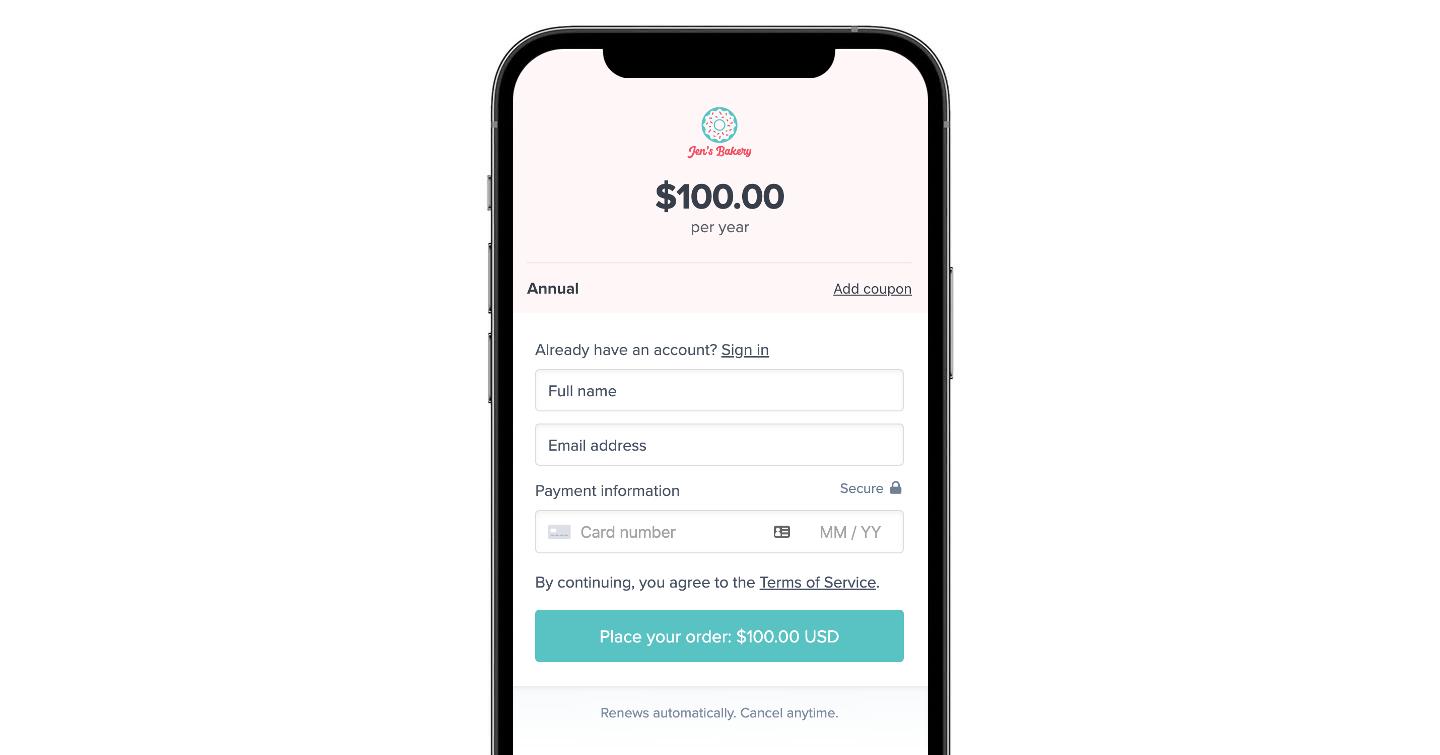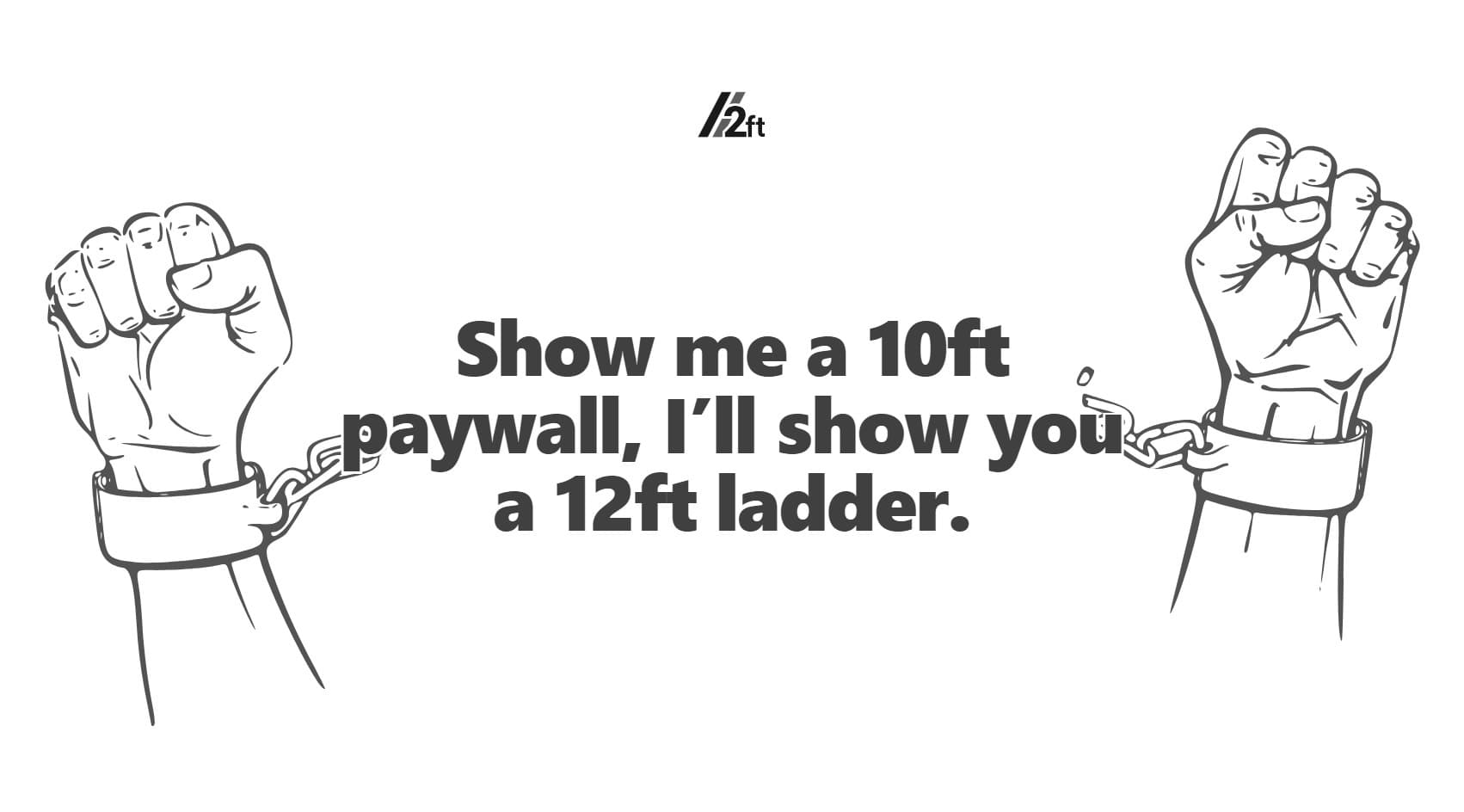What is a paywall? Types and case studies

How to restrict content using a paywall might be the most important decision a content creator can make. Finding that perfect balance between creating content for free and monetizing can be tricky. You want people to find your content, but you also need to build a sustainable business.
Table of contents
- What is a paywall?
- Types of paywalls
- Why use a paywall?
- Case studies: Companies using paywalls effectively
- A note about bypassing paywalls
- FAQs about paywalls
- Conclusion
Let’s explore the ins and outs of gating content and answer a few essential questions:
What is a paywall?
A paywall is a digital barrier that restricts access to certain content on a website. Only users who have a paid subscription or a paid membership are able to view the content behind the paywall. Paywalls are typically used by news websites, online publications, and other online businesses that produce high-quality content that is costly to produce.
The goal is to generate revenue for the website or publication by charging users for access to the content. This approach allows content creators to monetize their work effectively.
Think of a paywall as a gate restricting access to content. Just as a gate unlocks and givespeople access a building, a content gate or paywall lets people access parts of your digital content (which is known as gated content or paywalled content). This content may be a podcast, newsletter, blog post, education course or similar.

Unlocking access might be achieved by becoming a subscriber to that podcast, or buying a course, or signing up to to a membership plan for that blog.
Types of paywalls
There are several different types of paywalls. Here are the differences:
Hard paywall
A hard paywall is the most common; this completely blocks users from accessing any content until they pay for a membership or subscription. This type of paywall is typically used by newspapers and trusted publications or memberships that produce high-quality, in-depth analytical content.
For an example of a hard paywall, Netflix does not offer free content to non-members. If you don’t create a paid account, you don’t get to enjoy any TV shows or movies.
Soft paywall
A soft paywall allows users to view a limited amount of content without paying, but requires a subscription or membership to view all content. This type of paywall is typically used by online magazines and other publications that produce high-quality content but also want to allow some access to their content for free, perhaps so it can be discovered by search engines.
For an example of a soft paywall, music platform Spotify lets its audience listen to music and podcasts for free but this includes ads. If you upgrade to Spotify Premium, these ads are removed.
Metered paywalls
Metered paywalls allow users to view a certain number of articles or pages for free within a specific timeframe (normally per month) before they are required to pay for a subscription. This type of paywall is typically used by news blogs and other content-focussed memberships that produce a large amount of content on a regular basis.
For an example of a metered paywall, The New York Times lets its audience access 20 articles a month before requiring a subscription.
Why use a paywall?
Implementing a paywall can be an effective way to monetize a website, especially for content-rich sites such as news organizations, research institutions, or (independent) blogs.
Here are a few reasons why using a paywall might be a good idea:
- Revenue generation: Generate recurring revenue and a direct stream of income
- Sustainable business model: Become less reliant on advertising revenue which in turn creates a better user experience-
- Audience attraction: Bring in a more engaged and loyal audience by understanding their preferences and tailoring content to their interests. It becomes easier to foster a sense of community by actively engaging with your audience and asking for feedback.
- Value perception: If users are willing to pay for your content, it implies it is valuable. Typical paywalled content includes in-depth analyses, expert insights, exclusive interviews, or premium resources for businesses
- Better data and analytics: Receive more data about your users to understand them better. Regularly analyze user behavior, subscription patterns, and churn rates. This data will enable you to refine your strategy for maximum effectiveness.
What to consider before launching a paywall
Our customers and potential customers often ask us – as well as the initial question "What is a paywall?" – “How much content should I put behind the paywall?” but it’s better to consider which content should be gated rather than how much.

In order to decide what content should be paywalled, you need to ask yourself a few critical questions:
1. What is your goal?
When creating a post, article or podcast, think about the (primary) objective of that piece of content. Are you looking to increase your brand visibility, including establishing yourself as a thought leader in your industry?
Are you looking to monetize / earn money from the content? Are you trying to build your database (often known as ‘generating leads’)? Answering these questions will help you know what content to gate/restrict.
If adding a paywall or a metered paywall dramatically reduces the quality of your members’ experience, you might want to reconsider it.

2. Who is your competition?
There’s not much point asking people to pay for something if they can get it for free elsewhere! When researching your next post, find out if any content in a similar industry or topic is easily and freely available.
There’s nothing wrong with creating more content on the same theme but, as always, you need to make sure your audience is gaining something from you that others are not providing – this might include a first-hand experience, or an unique insight that nobody else can offer.
3. Are you adding enough value?
If your content isn’t adding huge value to the audience, it shouldn’t be gated. You need to offer information that isn’t found elsewhere or it needs to be in a format that offers high ‘production value’.
For example, longer content such as in-depth analyses and ebooks or downloads are suited to gated/paywalled content, while shorter content such as blogs of up to 1000 words are usually better as ungated/free content. Remember, paywalls aren’t the only way to monetize content. From ads to courses to patronage to sponsorship, you might find another model that works for your brand.
Case studies: Companies using paywalls effectively
These famous publications should help to demonstrate how companies can effectively use paywalls to monetize their content and provide exclusive value to their members.
Water and Music
Tech and music writer Cherie Hu founded Water and Music, a research and intelligence network for the new music business. The company's mission is to make the music industry more cooperative and transparent with a peer-to-peer approach to knowledge exchange, on subjects from streaming to Web 3.
Stratechery
Stratechery, run by technology analyst Ben Thompson, offers a subscription-based model for his in-depth analysis of the tech industry. The paid membership provides access to exclusive articles, daily updates, and a community forum.
The Mythical Society
Rhett & Link, YouTubers and internet celebrity hosts of Good Mythical Morning, invite you to venture into unprecedented dimensions with their gtaed content platform Mythical Society. Membership grants access to behind-the-scenes content, intimate vlogs, unique products and more.
Pack Hacker
Tom Wahlin founded reviews site Pack Hacker, which finds and tests gear for travel and everyday life. He and his team believe the best reviews and guides are created through unbiased real-world testing and usage. Paid members receive access to in-depth packing guides and exclusive videos.
The Athletic
The Athletic is a sports news platform that offers premium content and in-depth coverage of various sports. They have successfully implemented a subscription-based model, attracting sports enthusiasts who seek high-quality sports journalism.
A note about bypassing paywalls
While bypassing paywalls may be tempting, it's essential to respect the value of premium content and consider supporting publishers through subscriptions or memberships. However, utilizing free trials, exploring alternative sources, and clearing cookies can sometimes provide temporary access.
Bypassing paywalls raises ethical questions regarding intellectual property rights, fair compensation for creators, and the sustainability of quality journalism. It's essential to balance access to information with respect for content creators' efforts and livelihoods.
For example, 12ft Ladder is a website that bypasses paywalls. It does this by pretending to be a search engine crawler (websites with paywalls often allow access to search engine crawlers to ensure their pages appear in search engines). 12ft.io takes the cached copy of the page from the search engine and displays it to the user. It is important to note that bypassing paywalls is not always legal. Some websites have terms of service that prohibit the use of tools like 12ft.io.
 The 12ft Ladder homepage
The 12ft Ladder homepage
Paywalls are a way for membership sites to generate revenue, so bypassing them can deprive the creator of crucial revenue. Are you an independent publisher or content creator? No doubt you need this revenue to survive, so protecting your content is paramout. Here at Memberful we offer a simple way to create a paywall on a WordPress website. Fortunately, our technology sits 'on the server side' which means that 12ft.io cannot bypass a paywall created with our Memberful WP plugin.
FAQs (Frequently Asked Questions) about paywalls
How do paywalls impact online users?
Paywalls restrict access to certain online content, requiring users to pay or subscribe for full access. While they can be frustrating, paywalls also support quality journalism and content creation.
Why do publishers implement paywalls?
Publishers implement paywalls to monetize their content, generate revenue, and support quality journalism. Paywalls help sustain the integrity of online ecosystems by ensuring fair compensation for creators and maintaining high editorial standards.
How can users support quality journalism without encountering paywalls?
Users can support quality journalism by subscribing to reputable publications, donating to independent creators, and advocating for policies that promote transparency and accountability in digital content distribution.
What role do paywalls play in the digital landscape?
Paywalls play a crucial role in the digital landscape by incentivizing quality content creation, ensuring fair compensation for creators, and maintaining editorial integrity. While they may pose challenges for users, paywalls contribute to a vibrant and sustainable online ecosystem.
Conclusion: What is a paywall?
Paywalls are an effective way for online publications to generate revenue and support the production of high-quality content. Only users who have a paid membership are able to view certain pieces of your paywalled (or gated) content.
![]()
Paywalls are a delicate balancing act, as it's important to generate revenue with paywalled content as well as offer some free access to the public so they can discover your website. But a well-executed strategy not only ensures sustainable revenue for your membership but also fosters a loyal and engaged audience.
If you have specific questions about paywalling your own content, go to our help docs or please do reach out – simply click the red button to start chatting with our team!
Subscribe for updates
Stay up to date on Memberful's latest product updates, insights, and teaching centered around growing your community.
Have an audience?
Customers like Mythical (28+ million subscribers) rely on Memberful to power their membership communities.
Get started for free